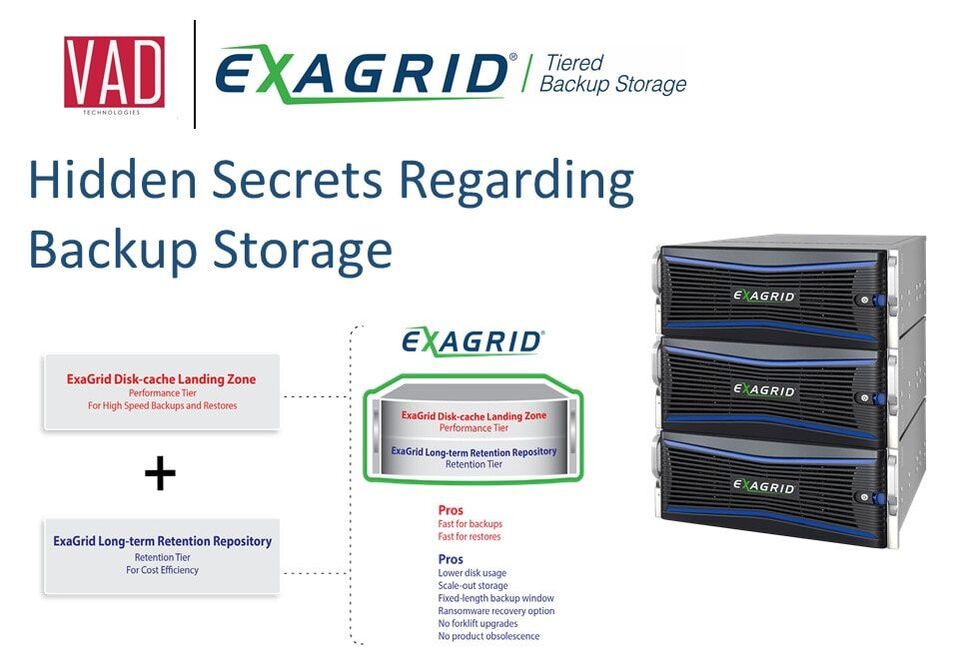|
Introduction A lot of time goes into picking a backup application such as Veeam, Veritas NetBackup, Commvault, HYCU, Oracle RMAN Direct, and dozens of others. However, rarely does anyone think about or truly understand the impact of the backup storage that sits behind these backup application in regards to cost, performance, scalability, and IT staff time. Low-cost Primary Storage Disk
Many organizations use low-cost primary storage disk for their backup storage. It is simple and fast. The challenge with low-cost primary storage disk is the long-term cost depending on the retention policy. Some backup applications have no data deduplication to save disk storage and others have a low level of deduplication that will achieve 2:1, 3:1 and even a 5:1 data reduction. This definitely helps in reducing storage and saving costs. However, you cannot run aggressive 20:1 data reduced data deduplication in a backup application as it is too compute intensive. Data deduplication in the backup application slows it down so you can only afford to do a low level of deduplication in the backup application without crippling backup performance. In addition, many backup applications also do their encryption in software. The combination of data deduplication and encryption can greatly slow backups down. Disk behind a backup application is cost effective when the retention is low, typically 2 copies to as many as 12 copies (this is a combination of weekly, monthly and yearly backups). The cost cutover point depends on the level of deduplication that the backup application achieves. Backup application deduplication approach and cost cutover point:
Low-cost primary storage disk is the best approach for 2, 4 and sometimes even 6 copies. Typically, at over 4 copies, dedicated appliances with data deduplication can be far less expensive than low-cost primary storage disk. This is because resources are dedicated to the deduplication process and more aggressive algorithms can be used achieving deduplication ratios of 10:1 to as high as 50:1 with an average typically around 20:1. Often what happens is that the IT organization does not know how to calculate how much low-cost primary storage will be required, so they buy a certain amount of usable terabytes, and then 3 months later buy more, and another 3 months later buy more, etc. They start with $50,000 worth of backup storage and 3 years later end up with $500,000 worth of backup storage. You need to calculate up front how much storage will be required over the next 3-5 years so you know up front and can plan or instead chose a different approach. In hindsight, many organizations greatly overspend on storage. Companies, such as ExaGrid, can use a straight disk calculator that shows the difference in cost between low-cost primary storage disk and appliances with deduplication, while taking into effect the retention policy (number of daily, weekly, monthly and yearly backups), the data growth rate for a specified number of years, whether replication to a DR site is required, and the cost per usable terabyte of the low-cost primary storage. This approach quickly shows if you are overspending on your backup storage. Inline, Scale-up Deduplication Appliances Inline, scale-up deduplication appliances such as Dell EMC Data Domain, HPE StoreOnce and Veritas 5340 (for NetBackup only), are all dedicated to deduplication and achieve higher deduplication ratios and therefore can greatly reduce the cost of the backup storage. However, there is a huge penalty to pay to save on storage costs. Since the deduplication is performed inline, which means on the way to the disk between the backup application and the storage, the performance is about 15% the performance of writing directly to disk. As a result, other techniques are employed such as Data Domain Boost or HPE Catalyst in order to perform some of the deduplication work on the backup application media server. This approach improves the performance to about 1/3rd the performance of disk. So you are saving storage costs, but taking a huge hit on backup performance which increases your backup window. If you turn on software encryption for encrypted data at rest, then the backups slow down even further. In addition, all of the data on the disk is deduplicated so that when you want to restore, the data must be rehydrated, and the restores can be up to 20x slower than restoring un-deduplicated data from disk. Lastly, these appliances use a scale-up architecture, which means they have a fixed controller and disk shelves. As the data grows, they don’t add any additional resources so the backup window grows and grows until the backup window is so long that you need to buy a larger front-end controller or additional controllers that are each a silo system increasing backup management. Scale-up storage has always forced expensive and disruptive upgrades, siloed systems and forced product obsolescence as each time new processors, disk, etc. come out, the systems need to be refreshed. ExaGrid Tiered Backup Storage ExaGrid looked at these problems and came to the conclusion that IT organizations want it all:
ExaGrid’s Tiered Backup Storage delivers on all of these goals:
Summary Low-cost primary storage disk is the best choice for shorter retention periods such as a few weeks. Dedicated deduplication with higher deduplication ratios is required for backup storage cost savings. Inline, scale-up deduplication appliances reduce backup performance, reduce restore performance, and don’t scale. You are forced to trade off performance and scalability for storage cost savings. ExaGrid provides the best of both worlds by providing the performance of disk for backup and restores, long- term deduplication savings for all retention, scale-out architecture for a fixed-length backup window and no forklift upgrades or product obsolescence. In addition, ExaGrid’s architecture provides a virtual air gap, with a non-networking-facing retention repository tier with immutable data objects and delayed deletes for ransomware recovery. For more Insights about EXAGRID, go to: https://www.exagrid.com/ Details of How to become a EXAGRID Partner can be found here: https://www.exagrid.com/reseller-portal-login/
1 Comment
Leave a Reply. |
Archives
February 2024
Categories |
ServicesSales
Pre-sales Training Marketing Finance Logistics |
Company |
|


 RSS Feed
RSS Feed
